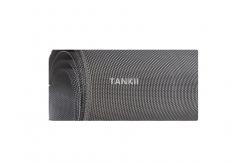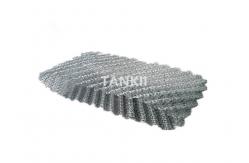Knitted Stainless Steel Wire Mesh Braided Material High Temperature Resistant
|
|
Knitted Stainless Steel Wire Mesh for Braided Material Application
Knitted wire mesh gaskets provide an excellent cost effective EMI
gasket, providing shielding in the magnetic as well as electric
fields. Kemtron knit in four wire types, Monel, Stainless steel,
aluminium and tin plated copper clad steel. Knitted mesh gaskets
can be supplied as solid mesh or knitted over elastomeric cores
with or without environmental seal in continuous lengths or
fabricated to custom designs.
Knitted mesh airbag filters possess excellent filtration capability. Our filters are made of stainless steel by using advanced knitting technology at low cost. The filters are of great variety, and of good resistance to corrosion and shock.
Properties The advantageous properties of stainless steels can be seen when compared to standard plain carbon mild steel. Although stainless steels have a broad range of properties, in general, when compared with mild steel, stainless steels have: ~ Higher corrosion resistance ~ Higher cryogenic toughness ~ Higher work hardening rate ~ Higher hot strength ~ Higher ductility ~ Higher strength and hardness ~ A more attractive appearance ~ Lower maintenance Corrosion Resistance All stainless steels are iron-based alloys that contain a minimum of around 10.5% Chromium. The Chromium in the alloy forms a self-healing protective clear oxide layer. This oxide layer gives stainless steels their corrosion resistance. The self healing nature of the oxide layer means the corrosion resistance remains intact regardless of fabrication methods. Even if the material surface is cut or damaged, it will self heal and corrosion resistance will be maintained. Conversely, normal carbon steels may be protected from corrosion by painting or other coatings like galvanising. Any modification of the surface exposes the underlying steel and corrosion can occur. The corrosion of different grades of stainless steel will differ with various environments. Suitable grades will depend upon the service environment. Even trace amounts of some elements can markedly alter the corrosion resistance. Chlorides in particular can have an adverse effect on the corrosion resistance of stainless steel. Grades high in Chromium, Molybdenum and Nickel are the most resistant to corrosion. Cryogenic (Low Temperature) Resistance Cryogenic resistance is measured by the ductility or toughness at sub zero temperatures. At cryogenic temperatures the tensile strengths of austenitic stainless steels are substantially higher than at ambient temperatures. They also maintain excellent toughness. Ferritic, martensitic and precipitation hardening steels should not be used at sub-zero temperatures. The toughness of these grades drops significantly at low temperatures. In some cases this drop occurs close to room temperature. Work Hardening Work hardenable grades of stainless steel have the advantage that significant increases to the strength of the metal can be achieved simply through cold working. A combination of cold working and annealing stages can be employed to give the fabricated component a specific strength. A typical example of this is the drawing of wire. Wire to be used as springs will be work hardened to a particular tensile strength. If the same wire was to be used as a bendable tie wire, it would be annealed, resulting in a softer material. Hot Strength Austenitic grades retain high strength at elevated temperatures. This is particularly so with grades containing high levels of chromium and/or high silicon, nitrogen and rare earth elements (e.g. grade 310 and S30815). High chromium ferritic grades like 446 can also show high hot strength. The high chromium content of stainless steels also helps to resist scaling at elevated temperatures. Properties The advantageous properties of stainless steels can be seen when compared to standard plain carbon mild steel. Although stainless steels have a broad range of properties, in general, when compared with mild steel, stainless steels have: ~ Higher corrosion resistance ~ Higher cryogenic toughness ~ Higher work hardening rate ~ Higher hot strength ~ Higher ductility ~ Higher strength and hardness ~ A more attractive appearance ~ Lower maintenance Corrosion Resistance All stainless steels are iron-based alloys that contain a minimum of around 10.5% Chromium. The Chromium in the alloy forms a self-healing protective clear oxide layer. This oxide layer gives stainless steels their corrosion resistance. The self healing nature of the oxide layer means the corrosion resistance remains intact regardless of fabrication methods. Even if the material surface is cut or damaged, it will self heal and corrosion resistance will be maintained. Conversely, normal carbon steels may be protected from corrosion by painting or other coatings like galvanising. Any modification of the surface exposes the underlying steel and corrosion can occur. The corrosion of different grades of stainless steel will differ with various environments. Suitable grades will depend upon the service environment. Even trace amounts of some elements can markedly alter the corrosion resistance. Chlorides in particular can have an adverse effect on the corrosion resistance of stainless steel. Grades high in Chromium, Molybdenum and Nickel are the most resistant to corrosion. Cryogenic (Low Temperature) Resistance Cryogenic resistance is measured by the ductility or toughness at sub zero temperatures. At cryogenic temperatures the tensile strengths of austenitic stainless steels are substantially higher than at ambient temperatures. They also maintain excellent toughness. Ferritic, martensitic and precipitation hardening steels should not be used at sub-zero temperatures. The toughness of these grades drops significantly at low temperatures. In some cases this drop occurs close to room temperature. Work Hardening Work hardenable grades of stainless steel have the advantage that significant increases to the strength of the metal can be achieved simply through cold working. A combination of cold working and annealing stages can be employed to give the fabricated component a specific strength. A typical example of this is the drawing of wire. Wire to be used as springs will be work hardened to a particular tensile strength. If the same wire was to be used as a bendable tie wire, it would be annealed, resulting in a softer material. Hot Strength Austenitic grades retain high strength at elevated temperatures. This is particularly so with grades containing high levels of chromium and/or high silicon, nitrogen and rare earth elements (e.g. grade 310 and S30815). High chromium ferritic grades like 446 can also show high hot strength. The high chromium content of stainless steels also helps to resist scaling at elevated temperatures.
|
||||||||||||||||||||||
| Product Tags: soft magnetic alloy precision tubing kovar alloy |
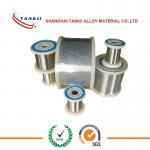
|
1J46 Soft Magnetic Alloy Wire 0.02-8mm Bright Surface |
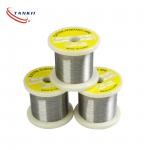
|
0.1mm 0.6mm High Elastic Modulus Elastic Alloy 3j53 Wire For Optical And Electronic Components |

|
Excellent Mechanical Properties Elastic Alloy Wire 3j53 Wire 0.2mm / Strip For Elastic Connector |
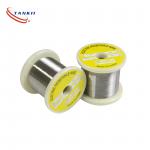
|
Ferromagnetic Precipitation Strengthened Constant Elasticity Alloy NiSpanC 3j53 Alloy Wire For Medical Apparatus |
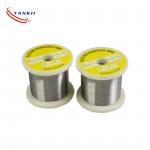
|
Ni-Cr-Ti-Fe Alloy Wire High Precision Constant Elastic Alloy Wire For Ultra Mechanical Filters |
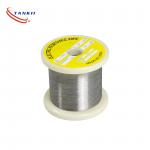
|
High Precision Constant Elastic Wire 0.1mm 0.5mm Ni-Cr-Ti-Fe Alloy Wire For Precision Machinery |

